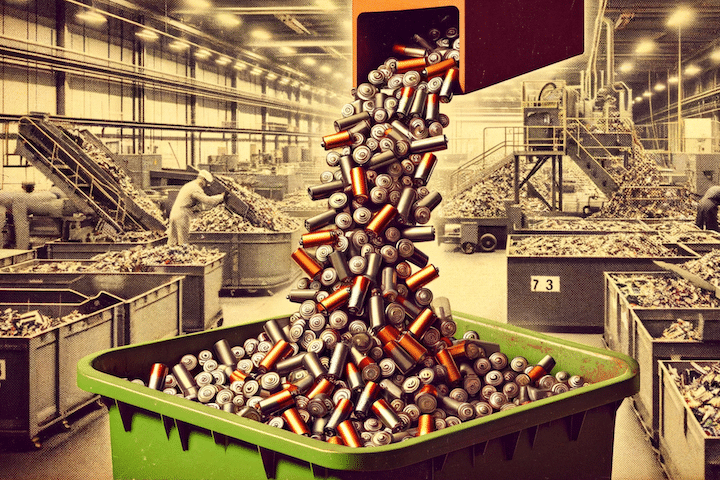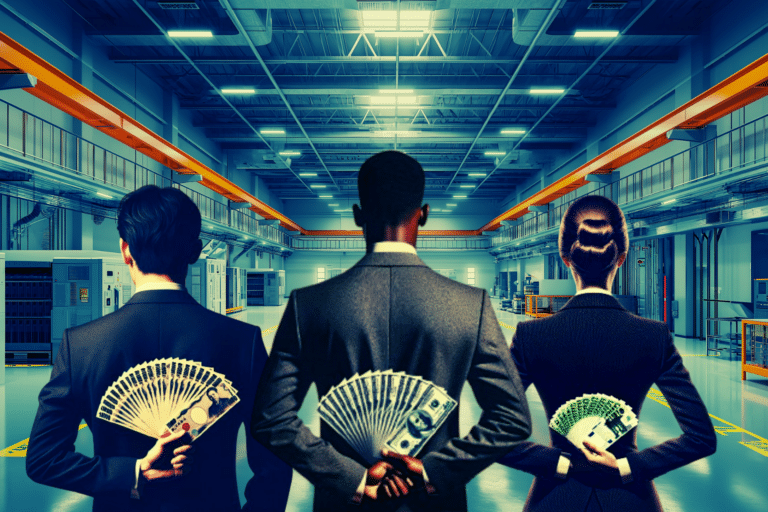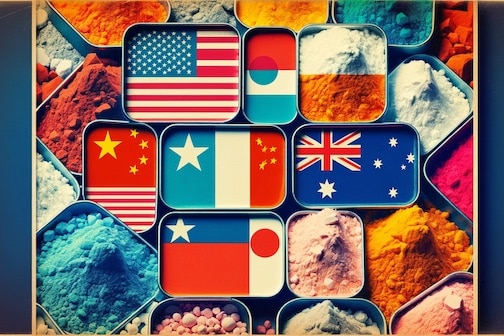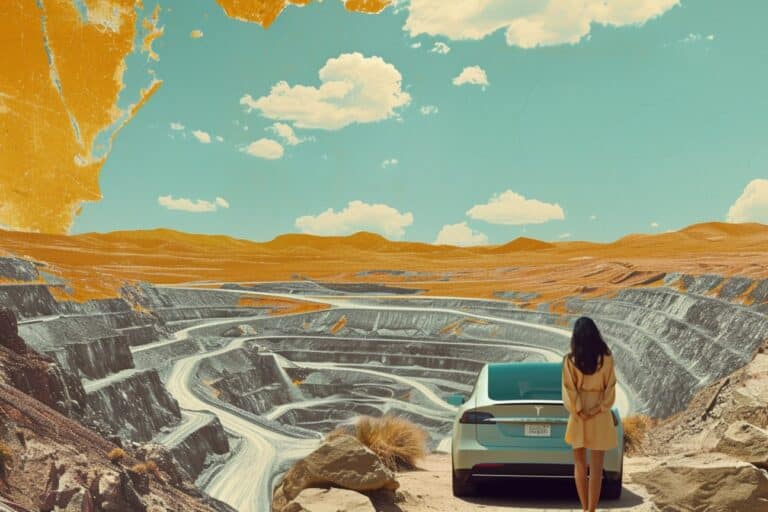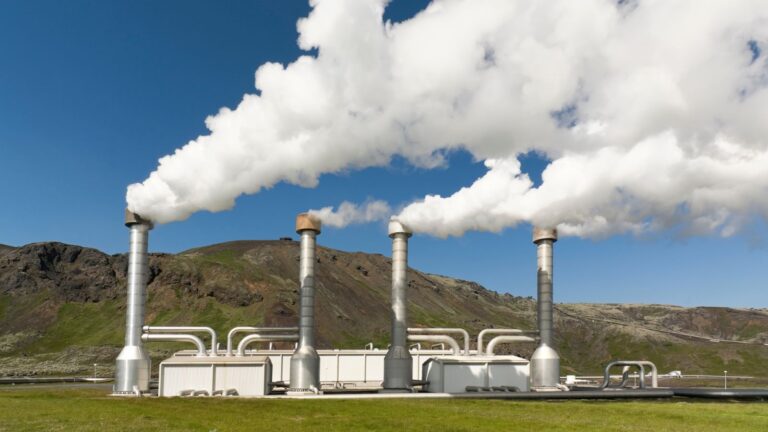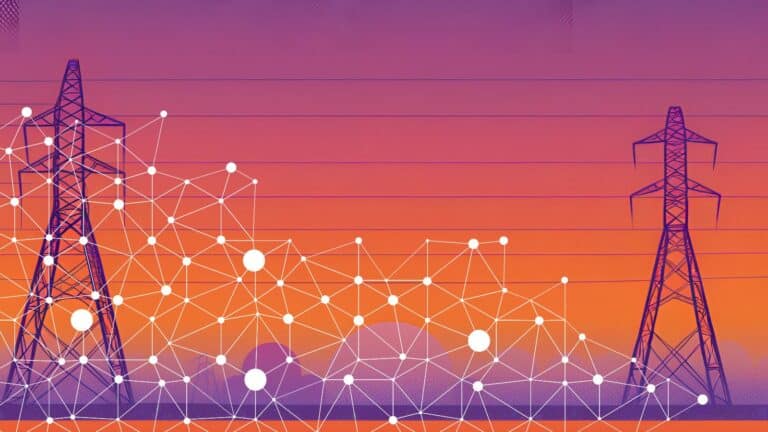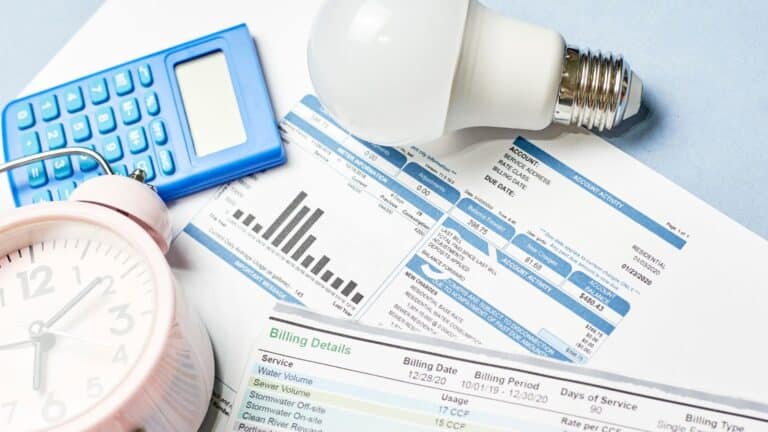Melissa Lott: [00:00:00] In the early 2000s when prospectors descended on the rural west Texas town of Sweetwater. These were engineers, developers and oil and gas experts who were looking for the next big thing. Texas is very friendly to the energy industry, but the people in Sweetwater were still skeptical. [00:00:14][14.8]
Greg Wortham: [00:00:15] You’d have somebody go to the Dairy Queen. A rancher would go the Dairy Queen and say, Oh, some fool from Houston just paid me 100 bucks from my when they just paid me for my win. Everybody laughs. Oh, yeah, right. You know, that’s not happening. [00:00:29][13.7]
Melissa Lott: [00:00:31] This is Greg Wortham. He’s from Sweetwater, a place known for cotton cattle, ranches and rattlesnakes. [00:00:36][4.4]
Greg Wortham: [00:00:37] There is historically been oil here, but not mega oil. So it’s free wind. It’s ranch country. [00:00:45][8.3]
Melissa Lott: [00:00:46] Sweetwater is also known for really strong and steady winds. And in the mid 2000s, Greg could see that the town was on the verge of a transformation. [00:00:53][7.0]
Greg Wortham: [00:00:54] There were calling prospectors, but there were sophisticated people in the energy industry who were going we are going to invest in when we’re looking around the United States to figure out where we should put it. [00:01:05][11.5]
Melissa Lott: [00:01:06] These prospectors and they really were like prospectors in the sort of gold rush. Well, they wanted to put wind farms in towns like Sweetwater, where there was a lot of open land on farms and ranches. And pretty soon turbines started popping up on ridges and in fields. [00:01:19][13.1]
Greg Wortham: [00:01:20] So then you could see it there, standing up there the size of the Statue of Liberty, and you could see hundreds of them. [00:01:25][4.8]
Melissa Lott: [00:01:25] And these turbines were not a fanciful green dream. They were a lifeline. Sweetwater and surrounding Nolan County have been suffering economically for years. [00:01:33][7.3]
Greg Wortham: [00:01:34] You know all the pictures of the dustbowl, That’s where we were headed. Properties in not only county, the ranches were not in the forefront or not producing well because we’re in a drought. The cattle were not healthy because we were in a drought. [00:01:47][13.4]
Melissa Lott: [00:01:48] The cattle ranches and cotton farms while they recorded the local economy. And declining agricultural wealth meant a declining population. [00:01:54][6.2]
Greg Wortham: [00:01:55] The children had left. The grandchildren never were going to come back. The ranch were 80 years old, and so it would just be useless open territory. [00:02:03][8.5]
Melissa Lott: [00:02:05] And this is exactly what brought Greg back to town. [00:02:07][2.4]
Greg Wortham: [00:02:11] I ran for mayor because I’d heard while I was in New York that when I was trying to come here, but Sweetwater was blocking it. And so when I came back, one of the first things I did was go, What’s now about a block from here? Go to the Economic Development Corporation and say, Not what you doing, but. So tell me about wind or something like that where I wasn’t saying, I hear you being stupid. And so the response I immediately got was, well, this win thing is it’s a it’s a fad. [00:02:41][30.3]
Melissa Lott: [00:02:42] Greg had been in New York working for a utility, and he’d seen the surge of wind projects and knew that it wasn’t a fad or some flash in the pan idea. It was being driven by very serious developers and it was sending a lot of money into rural communities. Greg ran for mayor in Sweetwater in 2005 and won. And he listened to hesitant landowners. He ease their fears, and then he passed incentives for wind projects Very quickly. Tax dollars started flowing to landowners and the local government, and wind became a tangible cash crop. [00:03:09][27.7]
Greg Wortham: [00:03:10] People in the community could drive out and touch that thing. So it’s like, well, let’s say these five hotels, I can touch that hotel. You know, these new restaurants I can order at that restaurant. There was tangible results. I mean, fundamentally changed lives for families in the community. [00:03:28][18.4]
Melissa Lott: [00:03:29] The local communities saw an immediate economic benefit, but then they noticed something else, something that just didn’t make a lot of sense. [00:03:35][6.2]
Greg Wortham: [00:03:36] The horizon is filled with wind turbines and the wind is blowing. But why are those turbines stopped and those turbines spinning? [00:03:42][6.2]
Melissa Lott: [00:03:43] With more and more wind projects getting built, the local transmission line reached its limit. It just couldn’t send any more electrons out of town. [00:03:49][6.3]
Greg Wortham: [00:03:50] You fill up the wire. Now there’s too many turbines trying to get on the wire. [00:03:53][3.4]
Melissa Lott: [00:03:56] That solar power line was essentially the road to market for Sweet Water’s new goods electrons, and with too many electrons, that road was getting backed up, forcing wind turbines to literally slow down or stop altogether. And when the electrons stopped, the revenue stopped. And Greg was worried about these idle turbines would cripple the economic turnaround that he was working so hard to support. [00:04:16][20.1]
Greg Wortham: [00:04:17] If you can’t get to the supermarket, then you’re not going to sell your corn and your potatoes. And so our wind was used to say it wasn’t converting to energy to be sent to Houston and Dallas. [00:04:28][10.2]
Melissa Lott: [00:04:29] This is the big switch. It’s a show about how to rebuild the energy systems that are all around us. If we want to slow climate change, then we have to transform our buildings and our homes, our cars and the economy as quickly as possible. But how do we do it right? I’m Dr. Melissa Lott, and I’m the director of research at the Center on Global Energy Policy at Columbia University. And I study the technologies and the systems that keep our electric grid running. This is the third episode of our five episode series on the zero carbon grid. And in this installment, it’s all about transmission. So once we’ve built the power plants have a net zero future, how do we make sure that all those electrons can get where they need to go? At a high level. What is it like? What is transmission? Well. [00:05:17][47.8]
Cheryl LaFleur: [00:05:17] The electric system is sort of like the nervous system in your body. It has to be transmitting all the time. [00:05:25][7.2]
Melissa Lott: [00:05:25] This is Cheryl LaFleur. And if there’s anyone who understands the network of wires carrying our electricity, it’s Cheryl. She worked at utilities for several decades. And then in 2010, President Obama appointed her to be a commissioner at FERC. That’s the Federal Energy Regulatory Commission. This is the federal agency that oversees transmission of energy between states. She’s also now on a board that oversees the power grid in New England, and we work together at Columbia. [00:05:50][24.8]
Cheryl LaFleur: [00:05:51] Electricity, for the most part, with the exception of batteries, whether they’re batteries in your phone or larger batteries. Electricity can’t be stored. And so every second the amount of electricity that’s being fed onto the grid by power plants or other resources and the amount of electricity that people are collectively using and all the appliances and equipment that use electricity has to be balanced to keep the voltage. And actually, the sine wave of the delivery of electricity at a constant level. [00:06:19][28.1]
Melissa Lott: [00:06:20] So do you remember the bathtub analogy from episode two? The grid is lot like a bathtub. Power plants of all different types are filling up that bathtub, in this case with electrons and anyone using those electrons. So homes, businesses, whoever, while they’re pulling from that bathtub through a lot of little pipes. And here’s why that’s important. The water that’s going into the bathtub has to match the water going out. If you’re emptying the tub too fast for too much demand, well, then you get outages like we saw during the winter storm of February 2021. If you’re filling up too fast with too much supply, well, then you can damage electronics. This happens because and I’m really simplifying the physics here. If you have too many wind turbines or other power plants that are sending too much power onto the grid, that puts pressure on the pipes that feed people’s homes and businesses. And a water system, if the pressure gets too high, well, the pipes could burst. And with an electricity system, when what we call voltage gets too high, the electronics could actually fry. [00:07:16][56.6]
Cheryl LaFleur: [00:07:17] So that has to be balanced in real time. And it’s done through a series of wires that connect the little wires in your house where you plug things in, connect to the wires that go from your house to the poles on your street that connect to the big wires, that connect to the power plants or other resources like batteries, where electricity comes from. And if you think of transmission is the big high voltage, there’s more electricity going through it higher up off the ground. It’s generally in an empty right of way, like a long patch of grass or land that’s been mowed or have trees cleared out of it. And it’s either lattice towers, you know, those big metal, they look like they were done with the kid’s erector set structures or now some of the newer transmission has the they’re called monopoles, a very, very high single metal pole. I mean, there’s more than 200,000 miles of transmission in the United States. So people see it all the time when the driving down the highway, they see a cross in the river. They probably don’t think about it very much. But transmission is what connects all the local communities that use electricity to the larger resources that deliver it. [00:08:32][74.9]
Melissa Lott: [00:08:32] Yeah, I can remember. I mean, as you said, like driving up and down the roads when I was a kid. I think transmission lines, like the billboards actually that are on the side of the roads, especially on the East Coast, like they just were kind of part of the scenery. They were just there. I didn’t think about it much the first time I looked at the transmission line and went, Whoa, That’s what that’s what that is, was when I was driving through parts of West Texas and they were starting to construct the competitive renewable energy zone, the cruise lines to connect wind to the cities. And I remember seeing the beginning of that like erector set. And I was like, it just unfinished, it seemed so, I don’t know, naked and just incomplete. And I realized it was no longer kind of blending into the background. I was like, This is huge. That’s a lot of metal. [00:09:12][39.9]
Cheryl LaFleur: [00:09:13] Well, I remember driving very shortly after I went to the electric company, driving somewhere with somebody and a car, and we were driving under a big transmission line and he said, There it goes, Electricity from Brayton Point to the world. That was a coal plant. Big, big whole set of coal units that used to be in Somerset, Massachusetts. And like a little light bulb went on. Obviously, I knew that’s what wires did, but I never particularly thought of like, Oh, when you see a wire, when you drive by one or drive under one, it’s going from someplace to someplace else. I just thought they were like a thing. The other thing that I think confuses people is most people call the little wooden poles that are on the streets where they live. If they live in a suburban or rural location, telephone poles, but they’re not just telephone poles, they’re electric poles, too. [00:10:02][49.6]
Melissa Lott: [00:10:03] Yeah, it’s interesting. And you touched on it like they’re these big wires and they have a role to play in moving huge amounts of electricity from the power plants closer to people. And then. The smaller wires are the kind of fingers that go up from there to get it to every individual house and company and and different facility. [00:10:18][15.5]
Cheryl LaFleur: [00:10:19] And then the wires around your house, it comes into your house at one place. And then at some point when your house was built or your apartment building or anything, an electrician came and put progressively smaller wires to get to actually your plugs where you plug in your cell phone or whatever you’re using. [00:10:36][17.1]
Melissa Lott: [00:10:37] Yeah, we’re surrounded by wires. It’s interesting, as you know, for those of us who have a garage, which is not a lot of people in the country, especially, we live in a city. But I think about you’ve been parking that fossil fuel vehicle on there for a long time and you want to go to an electric vehicle and you’ve got to upgrade your wires because your wires can’t handle that. Or if they did, it would take you days to charge your vehicle off the plug you have because it’d be a really small wire. [00:10:59][22.5]
Cheryl LaFleur: [00:11:00] Think back when car started. I mean, everyone used horses, I guess, right? So right now there’s a very well-developed infrastructure of highways and gas stations and trucks that bring the fuel into the tanks underneath the pavement and the gas station and so forth. That’s all oriented toward the internal combustion automobile, because that’s what people use. And if we switched to a fleet of electric vehicles, some of what it needs is already there because we have the electric system, but the direct charging stations or places where people plug in their cars has to be constructed the same way that we built all those gas stations. I mean, back in the old days, I mean, believe me, I’m not this old, But people would have to take gasoline if they went on a drive because you didn’t just assume you’d come across a gas station. But then that was all built. So people don’t worry when they go out in their their gasoline car that they won’t be able to finish their ride. They know they’ll find a gas station. And if we continue on the journey of using more electric vehicles, it will be that way for electric cars, too. You know that there’ll be a rest area with a high voltage charging while you get your cup of coffee. You can fill up your car. [00:12:13][72.7]
Melissa Lott: [00:12:13] Yeah. So let’s talk about this a little bit more, like how was the grid built in the past? I mean, let’s step through it because I’m trying to get to this point of how do we build the grid that we want in the future for the things we want to do. So if we’re going to net zero in the power system, a. [00:12:29][15.4]
Cheryl LaFleur: [00:12:29] Lot of what we have now was built after World War Two and in the sixties and seventies and early eighties. A lot of it was built. Generally. Each company would try to make sure they had enough power plants to provide power to the people they served. In a geographic region. You would put a power plant someplace not too far from a big population center, like a city where you could have water for cooling water and where there would be fuel. Either a coal barge or a coal train could get there or an oil barge, or if it’s natural gas and natural gas pipeline, could go to that plan and supply it with the fuel. So you needed transmission. They’d have to build that to connect the power plant to where the people lived. But the difference now is if we’re looking at using far more zero carbon renewable resources like wind and solar, wind in particular is much better constructed where there’s a very good source of wind, whether it’s off the Atlantic coast, in the wind zones, in the middle of the country that go from basically from like North Dakota down to Texas, there’s very excellent wind. And a lot of those best places for wind are not right where people live. And so you need wires to connect those resources. Like you mentioned, the cruise lines in Texas, you need wires to connect them to where the people live. [00:13:53][83.9]
Melissa Lott: [00:13:56] You have to connect them to where people live. This is exactly the problem that Sweetwater, Texas, faced back in the 2000s. And the solution, some hoped, was something called the cruise lines. And this brings us back to Greg Wortham. His vision for wind was hitting a bottleneck, limited transmission capacity. [00:14:13][16.4]
Greg Wortham: [00:14:14] We’d run out of opportunity, put our winters on a power line. And so if you produce more energy than you could put on the wire, that’s curtailment. [00:14:24][10.6]
Melissa Lott: [00:14:26] Curtailment. This is a dreaded word for operators of wind and solar projects everywhere. Wind and solar farms depend on making electricity whenever the weather is good and they have no fuel costs. But if the wind is blowing strong and there’s no place to put the energy, well, the project has to stop sending electricity onto the grid. It’s wasted clean power. And in the early days of Sweetwater, wind boom curtailment was common. [00:14:48][22.2]
Greg Wortham: [00:14:49] When it began. The rancher would get funding from the wind company. They were very excited about that. And that started. The job started. And then as that suddenly filled up that power line, then suddenly again, all those turbines, let’s say half of the turbines were on, then half of the money was going to half of the ranchers because you weren’t all getting money because you’re. Only getting money if your turban is spinning. [00:15:14][25.5]
Melissa Lott: [00:15:15] Greg heard from towns all over the state that had great potential for wind but had limited or nonexistent transmission capacity. And so as communities in these windy regions of Texas began calling for more transmission capacity. State legislators came up with a plan called credits Competitive Renewable Energy zones. This is just a fancy way of saying that they were going to find the best places for renewables in Texas and then build transmission lines out to those areas. And this was going to be the key that unlocked when potential in rural areas across the state. [00:15:44][29.2]
Greg Wortham: [00:15:45] Because we have the wind and we had enough started and knowing what was going to come, that we could have a lot more if we could send it to markets. [00:15:53][8.7]
Melissa Lott: [00:15:59] It sounds great, right? But it’s not so simple. As this idea gained steam, it garnered a lot more support, but also faced a lot of resistance picking zones that would get the lines. Well, it was a contentious process and some people really wanted it, but others didn’t. And I can vividly remember these debates and I can remember driving down Highway 84 and seeing signs that said things like Stop the Wind on 84. There was a vocal group of people who just didn’t want the new power lines. [00:16:25][25.6]
Greg Wortham: [00:16:25] We call it the Fredericksburg problem. [00:16:27][1.4]
Melissa Lott: [00:16:27] Fredericksburg, Texas. That is a cute little town in the Texas Hill country. Or rolling vistas attract a lot of tourism. [00:16:33][5.7]
Greg Wortham: [00:16:34] And they don’t want any power lines coming through Fredericksburg. It’s wonderful, but you can’t get power directly from Sweetwater and Schneider and McKamey to Austin and San Antonio if you don’t go through the Hill country. [00:16:49][15.5]
Melissa Lott: [00:16:50] And this is the other side of the transmission story. Transmission is absolutely necessary if we want to build out renewable energy, but it can be highly controversial. And that makes building new lines difficult. And so planners have to go and find longer, more expensive routes that go around opposing communities or in some cases, local opposition can make a line impossible to build, even ones like Crest that could potentially transform rural Texas. [00:17:14][23.4]
Greg Wortham: [00:17:14] It costs a lot of money for these multimillion dollar a mile power lines to not go straight. [00:17:20][5.4]
Melissa Lott: [00:17:21] So let’s pause. I want to be super clear here. All big new infrastructure projects have impacts. They have big environmental impacts on ecosystems. It’s important that we understand these tradeoffs and then balance them with the benefits. In the United States, we’ve found ways to build cross-country infrastructure projects like freeways and natural gas pipelines. We’ve made these calculations in the past, and we can do it again. Now, we don’t always get it right, but there are ways that we can balance local impacts with the urgent goals of decarbonizing the grid and cleaning up air pollution. The combined impact of all this opposition has meant that across the country new transmission lines are being built at an extremely slow pace compared with the speed at which we’re building renewables. Decarbonization just does not happen without more transmission because a net zero grid without new transmission would be too expensive. But these lines, they present some very real tradeoffs that we need to grapple with at a local and national scale. Here’s Cheryl LaFleur again. [00:18:17][56.1]
Cheryl LaFleur: [00:18:18] Well, I think there’s a disconnect between people’s sincere political support for clean energy and their willingness to have things built near them. So if you see a small electric line or telephone line going down your street to your house, you might not particularly like having to mow your lawn around the pole or having it in the middle of your sidewalk. But it’s pretty obvious that that’s bringing electricity to your house. So you say, Well, I want electricity in my house, so I guess I have to have that line. If you see the big line going through your town and crossing your town to go to a substation and send electricity back, you also need that line to have electricity in your house. But it doesn’t seem like it’s like, well, that’s just going through my town. Or maybe even if it’s a really big high voltage direct current system, it’s just going through my whole region of the state. So I’m getting nothing from that. They have to take out trees and build this big thing. That’s not for me, so why would I want that? But in fact, that transmission line might be going through your town to a substation that sends wires right back to your town, but that’s just not visible from looking at it. Also, whenever you try to build anything, everything has tradeoffs. There’s virtually no way to build anything if you build offshore wind. You have you have to think about the marine life and the fishing industry. If you bring hydro down from Canada, aside from the whatever impact it has locally in Canada, it has to come down over a big region to come to you and people try as much as possible not to build new transmission in green pristine areas. But sometimes you have to cross something that wasn’t crossed before in order to get line to where the people live. That’s another tradeoff, is that the traditional thinking is that we want to use brownfields or rights away that already exist, or put something where there already is something. If you already have a line, maybe make that a bigger line rather than building another line where you have to like chop up all kinds of land and trees for a new line. And that makes intuitive sense. Of course, that’s less damaging to the earth if you just reuse the corridors you already have. But with the increasing concern about environmental justice and that a lot of things are located near people who are economically disadvantaged and have a lot of energy infrastructure located near them. If you just say, well, let’s reuse the sites we have, you’re just putting more stuff next to those people. Why not put some stuff next to the rich? People don’t have anything near them. Well, then you’re chopping up places where there’s no transmission now and there’s no easy answer. There’s a trade off. And so there’s a tendency for people to say, why does it have to be here? Sure, I know you need a line to get the wind in from Iowa or to get the hydro from Canada or to get the wind from offshore. But why does it have to go here? Aren’t there lots of places you could put this line? Well, yes, there are lots of places, but they all have tradeoffs. [00:21:18][180.2]
Melissa Lott: [00:21:19] Yeah, This is something that comes up so often in the overall transition. I’d say that the trade offs that we have so we can not build transmission lines. And if I look at the analysis that’s out there, it means the costs go up. That’s a tradeoff. You can have a really expensive system that requires very few new lines. Still requires investment in the system, but that’s really, really expensive. So here’s a question for you. Chicken and egg, which do we build first? Do we build renewables first, or do we pull the taxes and we build transmission first? I mean, is that Kevin Costner build the field? They will come. Or a field of dreams? Yeah. Like, why do we do it? [00:21:53][34.0]
Cheryl LaFleur: [00:21:53] I think we have to plan it together, but I think we can build quite a lot of renewables with the grid we have, and that’s one of the first things we should do. And there’s quite a bit we can build without major grid expansion. But yes, we should plan the grid expansion and the renewables at the same time. If you had another state like Texas, that was enormous and you can build the whole thing and it’s in one state, you don’t have to cross any other state. I think Krebs worked very well there. I think the concept of CRAs figuring out where the good renewable sites are and building highways to them makes a lot of sense. But I think in order to do it in places where you’re crossing state lines and different because the state governments and local governments are the ones that control where things get built, it’s just going to require cooperation and sharing the cost and coming in together. There’s not an equivalent of the Texas legislature that can come in and say, we’re going to take tax dollars and pay for it, and then that’ll be the field of dreams. I guess in theory, Congress, the U.S. Congress could do that. They could say we’re going to take tax dollars and build out the transmission grid the way we built the highway system in the Eisenhower era and the railroads in the Abraham Lincoln era. But certainly in my time in Washington, there was very little appetite to cut the states out of the equation to that extent. So I’m assuming that for the time being we have to work through the states and state cooperation to get things built. [00:23:21][87.7]
Melissa Lott: [00:23:21] So one thing that Cheryl mentioned that’s key is that the Texas cruise lines were built only in Texas. When you cross state borders with a transmission project, you’re going to have more stakeholders weighing in. But why do we need transmission across state lines at all? I mean, can’t we just plug local renewables into the local grid and boom, local zero carbon power? This is another really important reason for transmission. Do you remember back in episode two when we were talking about the diverse team of power plants that need to work together if we wanted to have an all star team? While these players have different strengths and weaknesses, when one player falls short, another player can step out and they can balance each other, even across regions or an entire country. And transmission helps us to do this. It helps our diverse team perform at its best. If we have a bunch of wind, let’s say in the Midwest and solar over in California, we’ve got some hydropower up in the Northwest. Well, we can connect them all together using transmission, and it will give us the flexibility that we need to use all of these different resources at different times. And Cheryl explains why regional balancing is so important. [00:24:21][59.7]
Cheryl LaFleur: [00:24:22] We’re moving into a more complicated future that I’m sure we’ll learn to deal with because they have different geographic characteristics, because you need to put them either where the wind is good or where there’s land for the solar, and they have different operating characteristics. A coal plant takes a long time to turn on, but once you turn it on, it can be on continuously. A solar array is only going to be on as long as the sun is up. Now, fortunately, we pretty much know when that is, so we can plan on when the sun is going to go down. Wind is a little bit more difficult. We’re getting much better at forecasting win, but there are long periods when the wind might be quiet, particularly in certain times of the year, and you need to rely on other balancing resources. We’re blessed in this country to have four time zones, so we have the ability to share resources that are operated different times of the day, but we need to connect them in order to do that. [00:25:19][57.0]
Melissa Lott: [00:25:19] So like, are there better ways to actually build out transmission than what we did in the past? Are there kind of easily, I don’t know, paved routes forward to getting a few lines built that aren’t there today? I mean, what do you think? I see a couple of different things, but I’m curious what your perspectives are on it. [00:25:34][14.4]
Cheryl LaFleur: [00:25:34] Well, if you look at the problems for why things aren’t getting built, there are arguments about where those things should go and who should pay for them. So either you could make it simpler for those things to be decided at the federal level with more federal siting authority, more use of federal land to put things on, or you could create a structure. At. Makes it easier for the states and companies in a region to work together to cooperate on things. I don’t want to understate that a lot has already been done. For example, a lot of transmission has been built in the Midwest to connect the wind to population centers. Not as much as we need, but both the midcontinent independent system operator and the Southwest Power. Two big grid operators have agreed on a lot of wind. And we’re seeing other parts of the country work together to plan transmission in their regions. I think FERC can do some things. The agency used to make that easier by clarifying the rules of how you agree on things and pay for them, because that’s what it’s going to take, deciding where it’s going to go and who’s going to pay for it. [00:26:45][70.2]
Melissa Lott: [00:26:45] So here’s the question What’s the risk if we don’t do it and the benefit if we do do it, and by it I mean build out the transmission grid. [00:26:53][7.5]
Cheryl LaFleur: [00:26:53] I think the risk is that we don’t decarbonize anywhere near at the pace that the various goals in 24 states have set as an objective, or we do it in a way that’s either very expensive or very unreliable. Last summer, when California ran out of resources in certain conditions, when the sun went down, had they had more transmission to other resources, it would have been easier to keep the lights on. And that’s just a microcosm of the problem of making sure that you have enough non sun and wind dependent resources to help keep your system up. [00:27:34][40.4]
Melissa Lott: [00:27:34] Yes. So here’s a question. You just talked about California, But, you know, I’m sitting here in Texas and was here, as you know, through the four days of no power and no water. And I thought a lot about I think because I’m an electricity nerd, but also because I was living in it, I thought about, you know, how would this be different if we had a different grid and how will this be different in the future? And this is not about saying this is what could affect everything when it came to Texas. It’s complex, There’s lots of factors, but how would things maybe have been different if we had a different set up, more connections? And then moving forward, how would things look if we do build the grid we want in this net-zero future? [00:28:14][39.6]
Cheryl LaFleur: [00:28:14] I think if I were trying to solve what happened in Texas, there’s a lot of solutions that don’t require transmission. But I do think if Texas had stronger transmission ties to the rest of the country, it would have helped. The way I think of it is if you look at what happened with within the ERCOT, read the Electric Reliability Council of Texas, which is most of the state, but there are corners of the state. There’s three parts of the state that are not in ERCOT. There is an area along the Gulf that’s part of the midcontinent ISO and connected to Louisiana and all all the way up to Minnesota in a big, big grid. There’s another part of the state that’s sort of the northwest that’s served by the Southwest power pool that’s connected to Oklahoma and Kansas and up across the Dakotas in that part of the country. And there’s a little tiny piece near El Paso that’s connected to the Western interconnection and serve there. And the population centers, especially if you think about the Gulf Coast, also lost power and had outages When they had the extreme cold, they had some of the same characteristics as Houston and Dallas, but they got the power back much faster because they were able to import power from other regions of the country that didn’t have the same situation. But being able to import more power would have helped make it more like the parts of Texas that were connected. Not no blackouts, but shorter. [00:29:46][91.8]
Melissa Lott: [00:29:47] So I’m thinking about this is basically transmission is one more option or tool in the toolbox when something goes wrong because something will go wrong. [00:29:55][7.6]
Cheryl LaFleur: [00:29:55] Look at the Suez Canal. One container vessel blocked all of global trade. If you had another canal or more options to get around it, then that wouldn’t you wouldn’t be so vulnerable. So if you have one way out, whether it’s one bridge off the island or one canal through the continents, and that fails, for some reason, you’re stuck. [00:30:20][24.2]
Melissa Lott: [00:30:26] Clearly, Texas has its own unique challenges when it comes to transmission. And in the wake of the historic February outages, the challenges of taking emergency. But Texas developers were able to finish the cruise lines they built around the Fredericksburg problem, where the lines faced intense opposition and they found new routes. And Texas invested $7 billion in new infrastructure. It completely changed the game for renewable energy in the state. And in Sweetwater, Texas, the one original small power line out of town was no longer a bottleneck for the towns when power electrons. In Mill in Abilene, Texas, drowning out any. [00:31:01][34.5]
Newsreel: [00:31:01] Talk of fossil fuels. In just two years, the US is set to become the biggest wind market in the world. [00:31:06][4.8]
Newsreel: [00:31:07] As if part of some elaborate industrial ballet. [00:31:09][2.6]
Newsreel: [00:31:10] Competitive with other forms of generation. So right now it’s actually wind power that’s keeping electricity prices low, especially in a state like Texas. [00:31:16][6.1]
Greg Wortham: [00:31:17] That one power line was a one way power like it was from Dallas. All power plants were in eastern Texas. We didn’t have a lot of people in activity that needed energy. So there were no power plants out here. You flip that around 20 years later, and now all the power plants are in West Texas and the cities need it. So now we’re now sending power to Dallas, Austin, Houston, San Antonio. [00:31:41][24.3]
Melissa Lott: [00:31:42] In fact, wind and solar are growing so fast in Texas that the state is facing yet another curtailment issue. Can the state build another transmission zone to bring more and zero carbon energy online? For all the reasons that we talked about, it might be difficult, but there’s at least a good economic precedent when created multigenerational opportunities for towns like Sweetwater, which have been on the decline. And it wouldn’t have happened without the crisis transmission lines. [00:32:06][24.7]
Greg Wortham: [00:32:08] Again, it’s just the fundamental opportunities for these families that you look back and see. The little softball team we go back to that’s called the girl softball team called the Terminators because it was turbines. It’s a terminators. It was the terminators. And so to watch how those girls grew up, because it turns out they were daughters of wind. And so literally there’s a picture that we used to use of the little girls in the Terminators. And one of them finally, later on, she’s wearing her wedding dress and her tennis shoes, marrying a second generation wind guy. Now they’ve got a third generation. It literally because they started as terminators and those girls grew up together, now in their twenties and third generation. When people, you know, it’s like their fundamental opportunities changed. [00:33:00][52.2]
Melissa Lott: [00:33:01] Those opportunities changed things for everyone in town. Landowners were getting paid tens of thousands or even hundreds of thousands of dollars to let developers build turbines on their land. And then for others in town, it opened up many different types of jobs, some directly with the wind projects and others in related industries, including for the kids softball team that grew up together. The Terminators who are named, of course, after the wind turbines. [00:33:23][22.0]
Greg Wortham: [00:33:24] The girls tended to go into like wind lore when business, those sort of things where the guys went into wind technician work because of wind and then because of Chris, because they had to have Chris or the wind just fizzles out. But if you keep the infrastructure moving with the opportunities, then it can build the industry and build the region. And that’s really what has happened out here. [00:33:46][21.6]
Melissa Lott: [00:33:51] Coming up in episode four of The Big Switch, we’re going to return to the winter storm of February 2021. We’re going to step into the control room of our court during the blackouts. How long new technology has changed the ways in which we balance the net zero grid? We’ll also ask how much new transmission do we actually need? And are there alternatives that require so much central infrastructure? Finally, in episode five, it’s all about the rules. Who is the grid of the future going to be designed for? The Big Switch is produced by Columbia University’s Center on Global Energy Policy, in partnership with Post-Script Media. Our producers are Daniel Waldorf and Dalvin Aboyeji. Sean Marquand edited the show and composed our theme song. A special thanks to Kirsten Smith, Jenna martin, Attilio Julliard and Q Lee. Our executive producer is Steven Lacy. I’m Dr. Melissa Watt, and this is the big switch. [00:33:51][0.0]
[1952.9]




